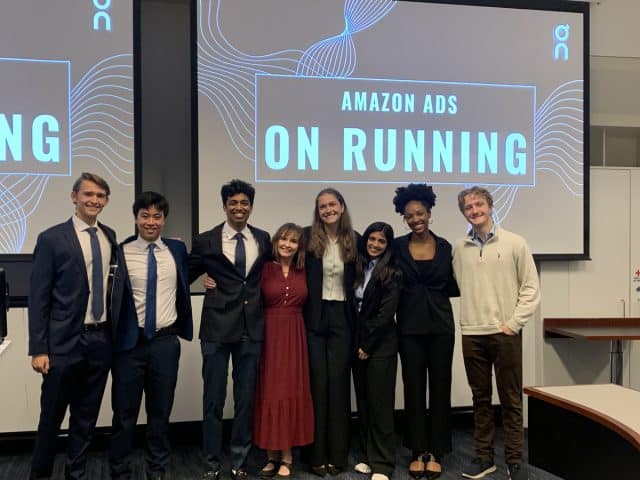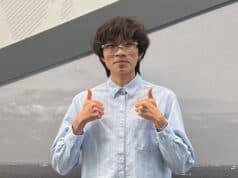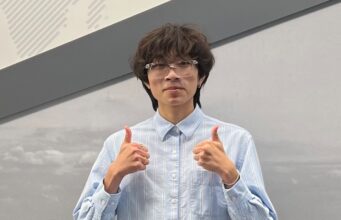This past spring, representatives from Amazon Ads asked teams of first-year students in Goizueta Business School’s undergraduate Bachelor of Business Administration (BBA) program to help them with a project. In addition to its e-commerce platform, Amazon Ads offers a suite of advertising solutions that allows businesses to reach customers, such as Twitch, Amazon Streaming TV+, Amazon live sports, and Amazon Online Video. The Amazon Ads team asked the 36 student teams—all from the program’s Business Communications 365 course—to choose a brand that currently uses Amazon and to craft a communication strategy persuading that brand to advertise within the Amazon ecosystem. The students were also tasked with creating a three-year implementation strategy that would grow that brand’s product awareness and drive purchase intent.
The project took roughly a month to complete, and the student teams presented their final presentations in class to their professors—Molly Epstein, professor in the practice of organization and Management, Nikki Graves, associate professor in the practice of organization and oanagement, and Steve Savage 21EvMBA, assistant professor in the practice of organization and management. From there, each professor chose two teams to present their strategies in front of the Amazon Ads team. “Presenting to executives is always a high-stakes moment—especially when the client is Amazon,” says Graves. “We hold our students to exceptionally high standards in critical thinking, research, information organization, and the development and delivery of professional presentations.”
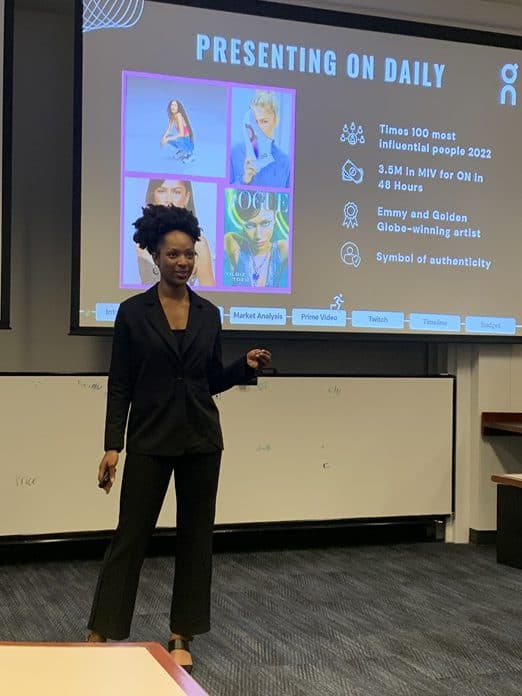
The six student teams selected by their professors to present to the Amazon Ads team were KIND Snacks, Rare Beauty, Samsonite Advertising, Nintendo Marketing, On Running, and AmazonAds x crocs.
Working up to the Final Presentation
Before team On Running practiced its initial run through in front of Graves prior to the final in-class presentation, the team members—Charles Millot 27BBA, Alex Zhu 27BBA, Sierra Benjamin 27BBA, Aashan Trivedi 27BBA, Vinit Iyer 27BBA, and Mary Mullinax 27BBA—felt confident. But when they finished the rehearsal, they were surprised to learn that Graves felt that the presentation needed to be much stronger. “I remember we went back to the breakout room and were all a bit stunned,” shares team member Charles Millot.
Graves reports that she gave the On Running team extensive feedback. “Giving student teams the news that they don’t want to hear—that they need to work harder and smarter—is a calculated risk,” says Graves. “The team can react badly, or they can use the criticism as an opportunity to shine.” In this case, the team took her suggestions to heart and got to work.
Benjamin says the team “looked at every single detail and reframed a lot of it.” The team’s main goal in revising the presentation was to ensure they delivered a cohesive message. “When you have so many people working together it’s important to always be on the same page,” Zhu adds. Millot calls the moment of truth “tough,” but also “a good boost” that challenged the team to do better.
William Eaglesham 26BBA, one of Graves’ teaching assistants, worked with team On Running throughout the case competition. Eaglesham found the group’s willingness to take constructive criticism and improve to be a key differentiator.
A week later, when the team gave its final presentation to the class in hopes of being chosen to present to the Amazon Ads executives, the improvement was obvious. “I immediately knew that they deserved to go the case competition,” Graves says. “This team exemplifies our students’ ability to take constructive criticism well and to work under pressure.”
On Running Takes the Top Prize
While performing research, the On Running team discovered that innovative Swiss athletic shoe and performance sportswear company, On Holding AG (better known as “On”), wanted to expand its global online retail presence. “We thought Amazon’s massive online presence and various advertising services and platforms uniquely positioned them to meet On’s goals of expanding their online retail,” explains Zhu.
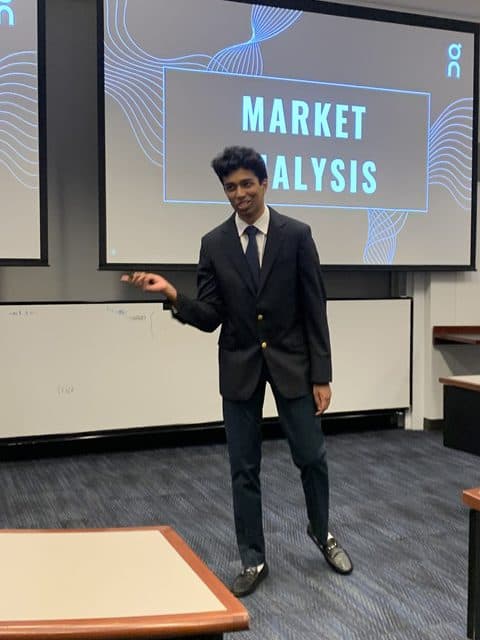
The team created several campaigns. To reach older customers, the team proposed “On Top,” a unique collaboration that would give Amazon Prime Video users a “part-training, part documentary” viewing experience with elite athletes. As an example, Mullinax, who is a member of Emory University’s women’s basketball team, recorded a few of her teammates working out while wearing On shoes. She created a video as an “On Top” example, which the team incorporated into its presentation.
A second strategy, “On Daily,” positioned On products as a lifestyle brand in collaboration with the actress and style icon Zendaya, a brand partner for On. Benjamin repurposed existing brand content that featured Zendaya to create a video ad for the presentation.
The team’s third strategy targeted the 18-34-year-old demographic, On Running’s “On Design” campaign featured a collaboration with a popular social media influencer and a shoe design competition that would air live on Twitch.
The Amazon Ads team was impressed, voting the On Running Team’s presentation the best of the day. “Team On delivered a professional and thoughtful presentation that showcased a strategic understanding of Amazon Ads’ product suite and presented well-organized ideas backed by data,” explains Amy Goffin, senior manager of US Agency Development at Amazon. “We recommended the team connect with the On Marketing team since the ideas were stellar and ones that could be implemented in a real-world campaign.”
Runner Up: The KIND Snacks Team
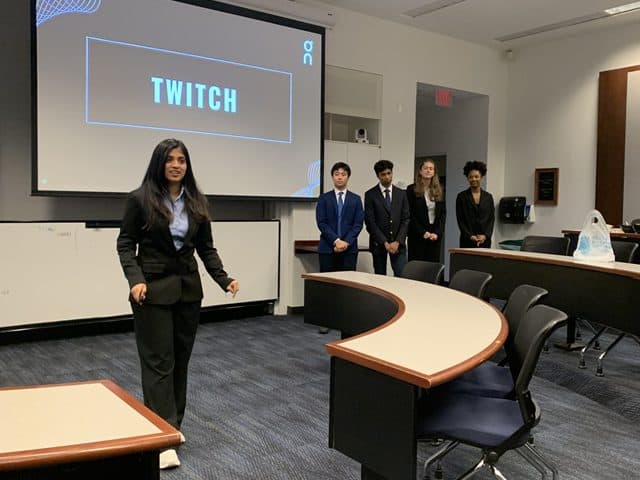
Choosing snack food company KIND Snacks, the KIND Snacks team included Sam Wronski 27BBA, Ben Wells 27BBA, Zach Hanson 27BBA, Ivy Chen 27BBA, and Larissa Lippe 27BBA. The team presented two communications’ strategies—”Pros Choose KIND” and “The KIND Break.” By using Amazon live sports and collaborations with rising WNBA star Cameron Brink and NFL quarterback Brock Purdy, the “Pros Choose KIND” campaign would help KIND reach health-conscious consumers who value authenticity and social good. The KIND Break strategy sought to reach similarly motivated Millennial parents via seasonal advertisements on Amazon Prime Video.
“Their storytelling approach made complex information accessible, supported by data-informed recommendations that included two creatively named campaigns within a $25 million investment,” says Goffin. “Well-designed slides and thoughtful responses rounded out the presentation that successfully merged market analysis with tactical execution plans, along with a ‘feel good’ creative concept which made it memorable.”
The Teams’ Takeaways
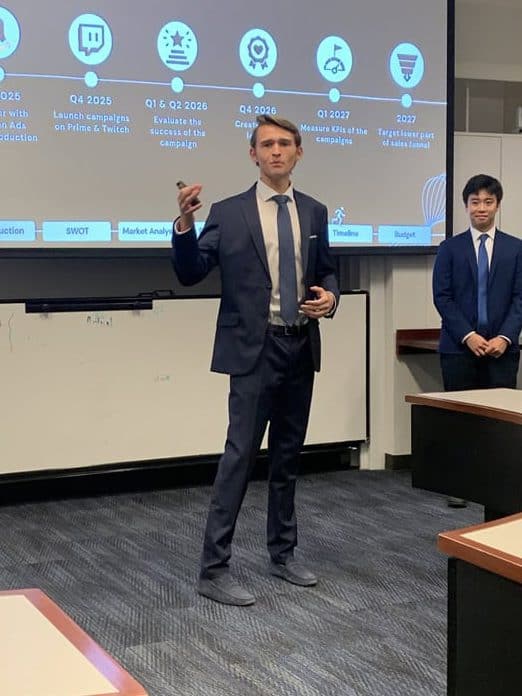
“This project taught me a lot about leadership, collaboration, and creative problem-solving. I’ve already brought those lessons into my summer internship, where I’m currently working on another high-stakes presentation,” explains Benjamin. “This experience has been one of the most rewarding parts of my year.”
For Zhu, the case competition taught him to shift his approach. “I’m usually a very practical guy, but sometimes it’s better to step out of your comfort zone,” he says. “Our team really tried to emphasize coming up with creative ideas and then figure out the implementation later. This helped us come up with the creative and ambitious ideas that we presented.”
Eaglesham, who participated in the same case competition in 2024, says his biggest takeaway from the business communications course—and a lesson he stressed while working with the members of On Running—was “attention to detail.” He also appreciates how the case competition allows students to work with real companies on real challenges. “It’s almost like a consulting project,” Eaglesham adds. “It’s a really great form of experiential learning.”
In Goizueta’s undergraduate BBA program, students don’t just study business—they practice it. Learn how experiential learning sets our students apart.
Interested in collaborating with Goizueta students on real-world business challenges? Partner with us to tap into fresh ideas and future talent.


